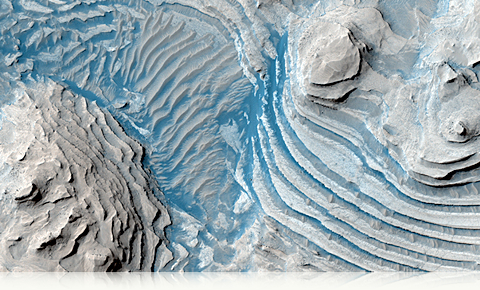
Mars without Martians
If you are inclined to believe that there once was a highly advanced technical civilization on Mars, and that NASA (the American space agency) is hiding evidence of it, why would you continue to view it as a source of information about the Red Planet?
If you think that NASA is in the business of cover-ups, how do you square that belief with the assumption that thousands of employees also need to be involved in the conspiracy? When have you ever heard of thousands of people keeping their mouth shut about the biggest news of all time? After all, a handful of people couldn’t keep news of their resurrected master nearly two thousand years ago a secret.
And if you swear upon your life that the government is hiding the truth about the alleged “face on Mars,” why aren’t you involved in private enterprise to build your own orbiter with a high resolution camera on it and take your own images? Why depend on a government agency to give you information that you already are convinced is tainted beyond repair? After all, the dawn of private space flight is upon us, why not private space exploration?
There is wonderment, no doubt, in looking at the stars, or pouring over images of the planets that we’ve been able to visit. I often think the greater thrill is the knowledge that we puny humans actually built spacecraft to leave our world and travel millions of kilometers to some other heavenly body, and with unbelievable attention to detail and intelligence, program that satellite to enter orbit, relay data, and start piecing those data together to answer any host of questions. If anything else, the exploration of space—that silent sea—is the true genius of mankind, and one that goes beyond the tribalism that still rules our world.
And I am sympathetic to those who want to find some personal answers in looking at the stars, whether it’s people who truly believe in astrology or neo-astrology (a term I prefer over “new age”). But I often find myself exasperated at the vast claims people have regarding space, extraterrestrials, and NASA. When it comes to Mars, and the deep belief that a civilization once existed there, I want to ask: why can’t we just have Mars without Martians?
I’ve seen countless tomes about the hidden link between the stars, aliens in the Pleiades, Mars, and the Egyptian pyramids. I’ve seen many (low-resolution) images reproduced in books and on Web sites purporting to show “obvious” signs of a compound existing on the Martian plains. When I’ve considered these images, I realized that what people want to believe is that they’re looking at a preindustrial civilization visible from the air, in the way we’ve viewed countless historical reconstructions of ancient Greece and Rome. The mind sees what it wants to see, and aided by numerous cultural cues and ideas, it’s no wonder that people go looking for (and see) an alien acropolis.
Consider this: if an interesting series of rock formations look like pyramids and you’re convinced that what you are seeing is indeed a complex of some kind, where are the roads? Where are the supporting building structures that should logically be nearby? Why do we find no grid patterns of any type anywhere on Mars that would definitely signal the presence of a civilization? Why must it always be rock formations in the shape of pyramids? Just because that shape is widespread on Earth, why must be in the heavens?
An easy fallback answer: time, of course! Time, that conquerer of all things, has erased all signs of lower-level buildings except the tallest ones. Naturally! How could I think otherwise? And like ancient Egypt, all those side buildings (workers villages, for example) would have long disappeared because of the ravages of time, but the really big structures remain because they were destined to be seen by man. No anthropic principle here!
Yet Mars has no tectonic activity, so we can’t say these cities have fallen prey to the movement of geologic plates (presumably that would have destroyed these alleged complexes as well). The Martian atmosphere is thin, and while some dust storms have been big enough to envelop the entire planet, an artificial structure on the surface would stand a greater chance of being preserved for a longer amount of time than here on Earth. So, why no barracks still visible with those complexes?
Or, it could just be that Mars is without Martians, be it the creatures of Ray Bradbury’s imagination or those interplanetary killers H.G. Welles chronicled. When we see incredibly detailed images of Mars (and those will only get better with more advanced cameras in the future), we are looking at a long dead world, with no cities, mysterious complexes, roads, landing pads or even strip malls. But what a world it still is! Dunes, impact craters, the largest canyon in the Solar System—an unparalleled beauty that is enticing, foreboding and full of wonder.
Who knows? Perhaps there is an ancient civilization buried under the sand and rock, long gone because of some unknown catastrophe as Mars lost its ability to generate a magnetic field that kept the sun’s rays from baking its surface. But really, Mars doesn’t need Martians to be a wondrous place; it just needs human curiosity to keep looking.